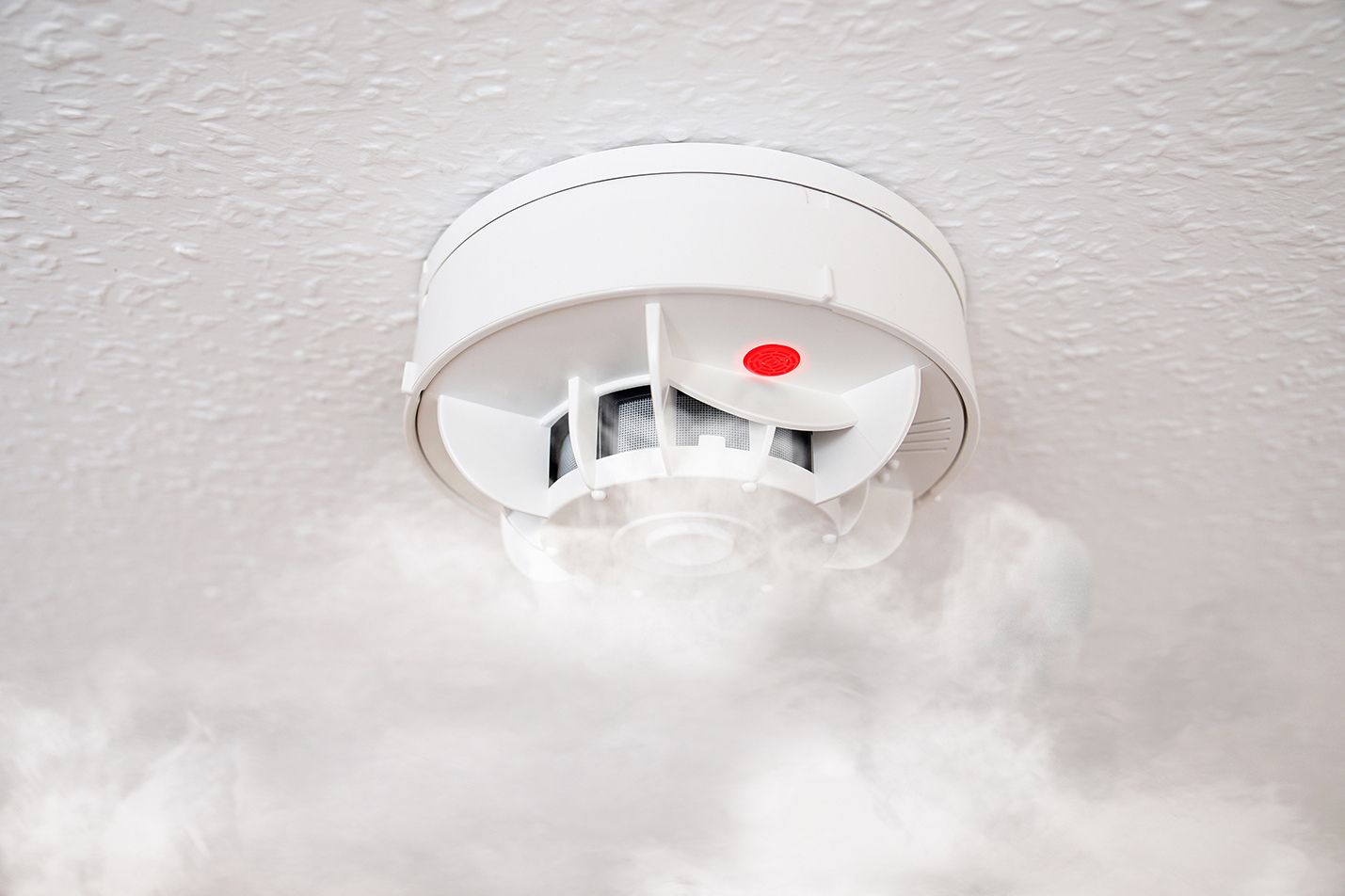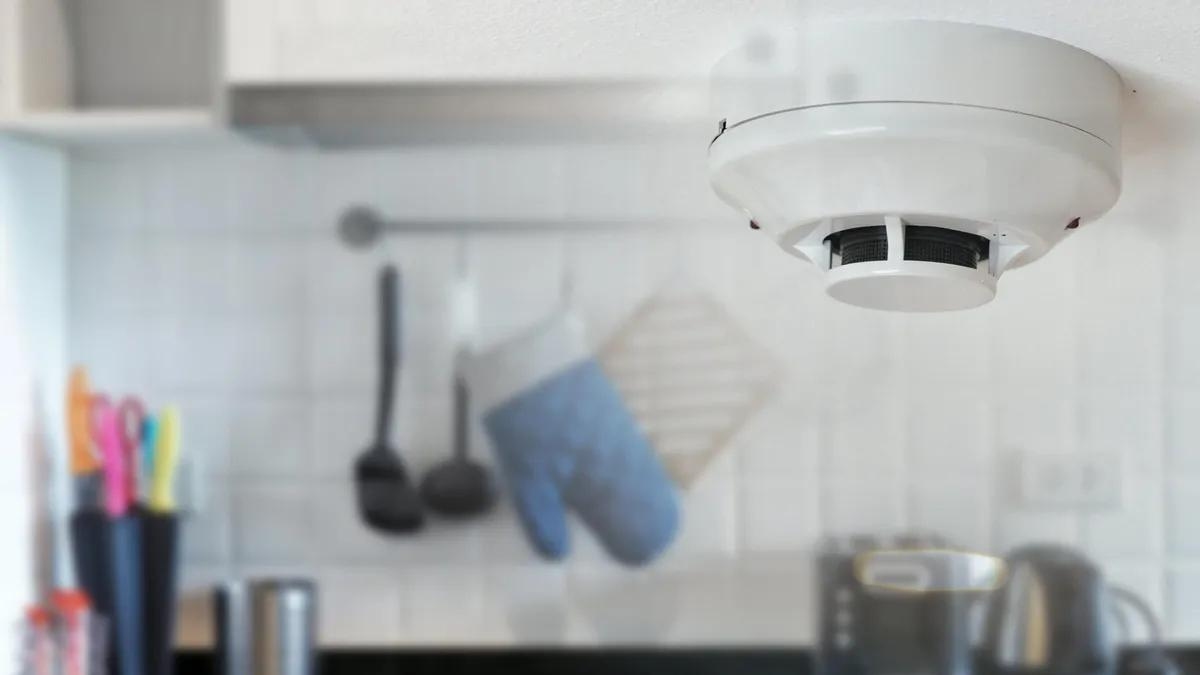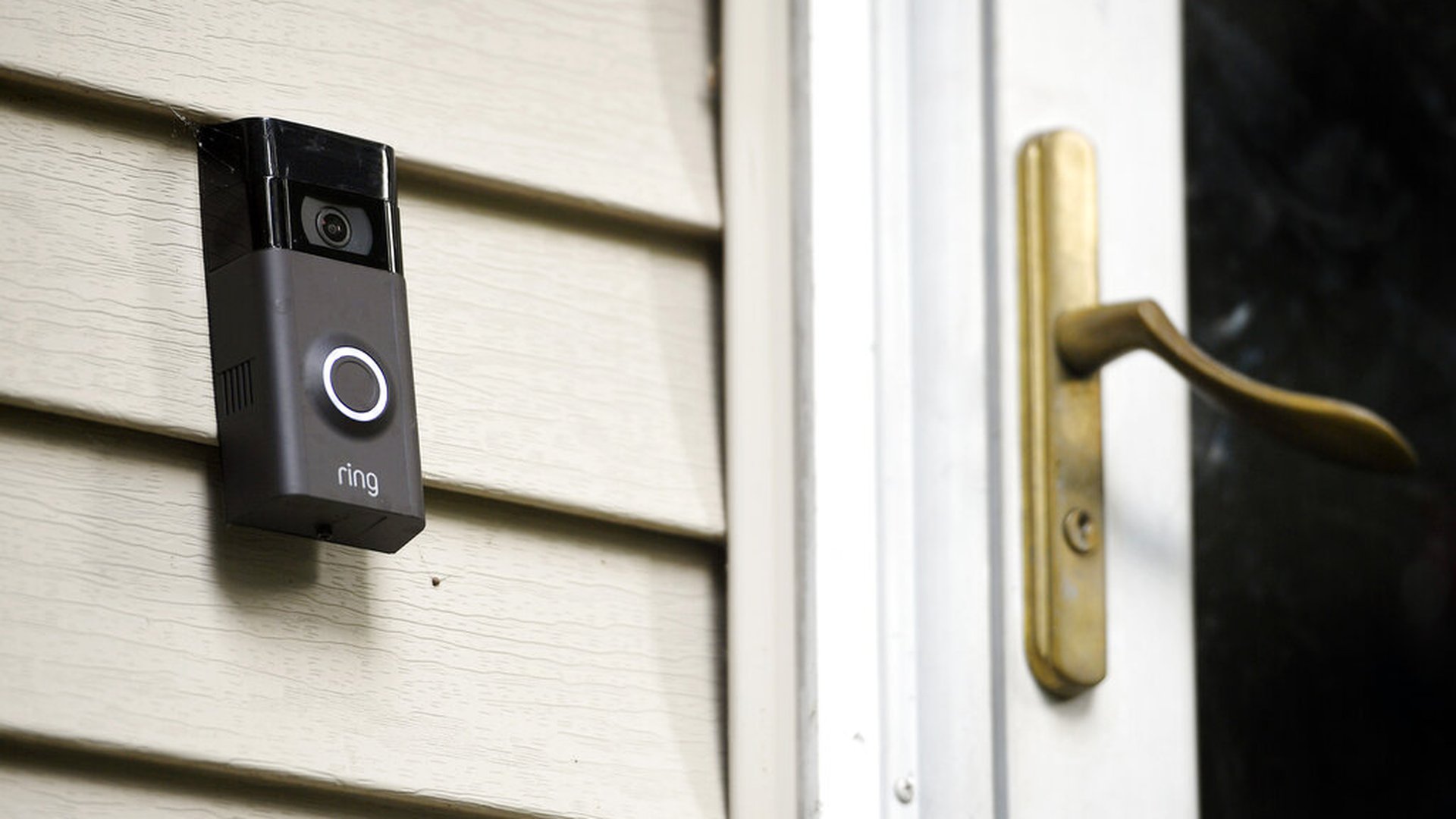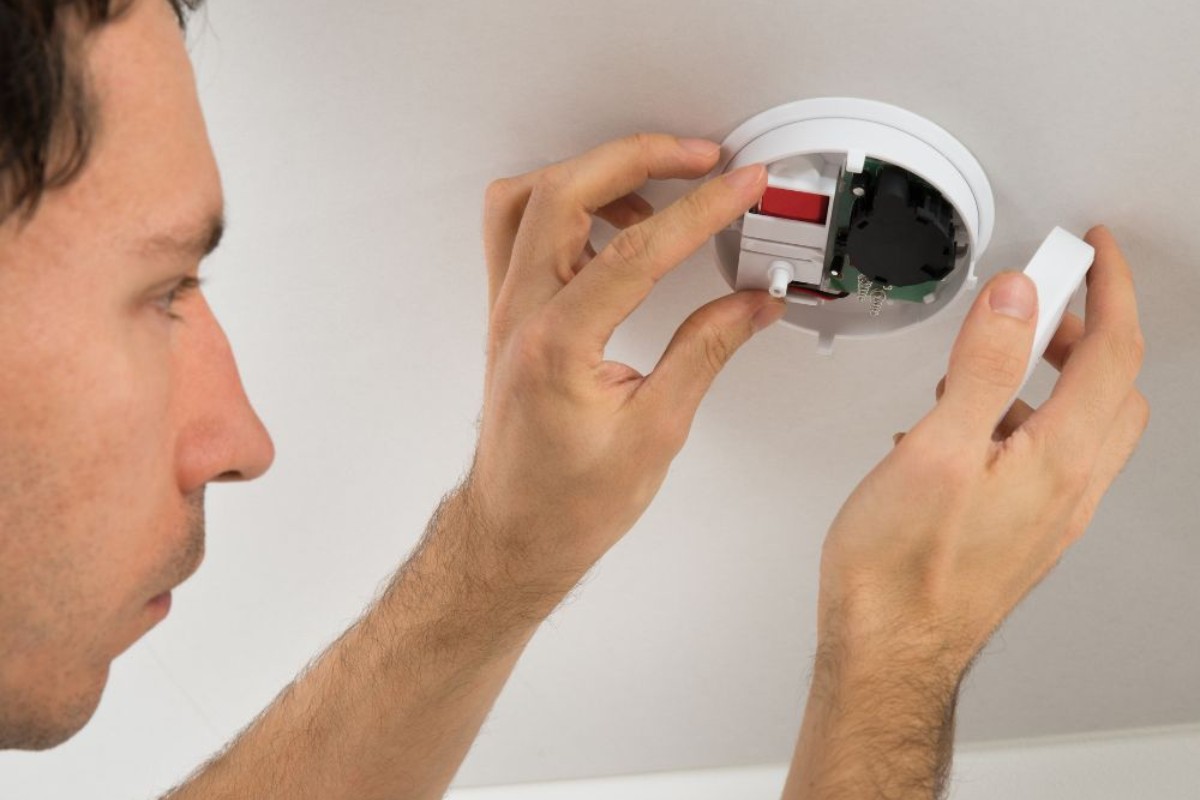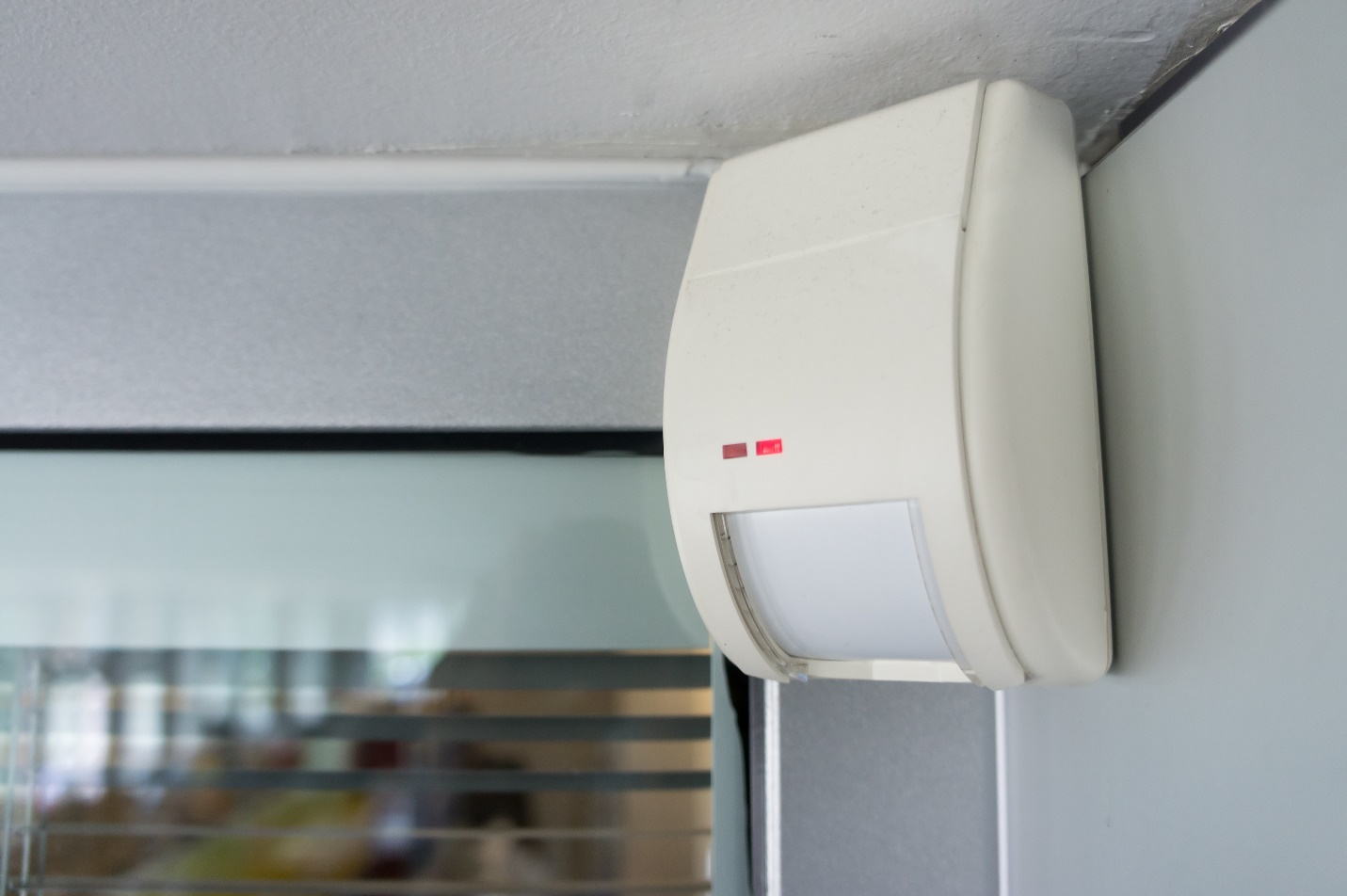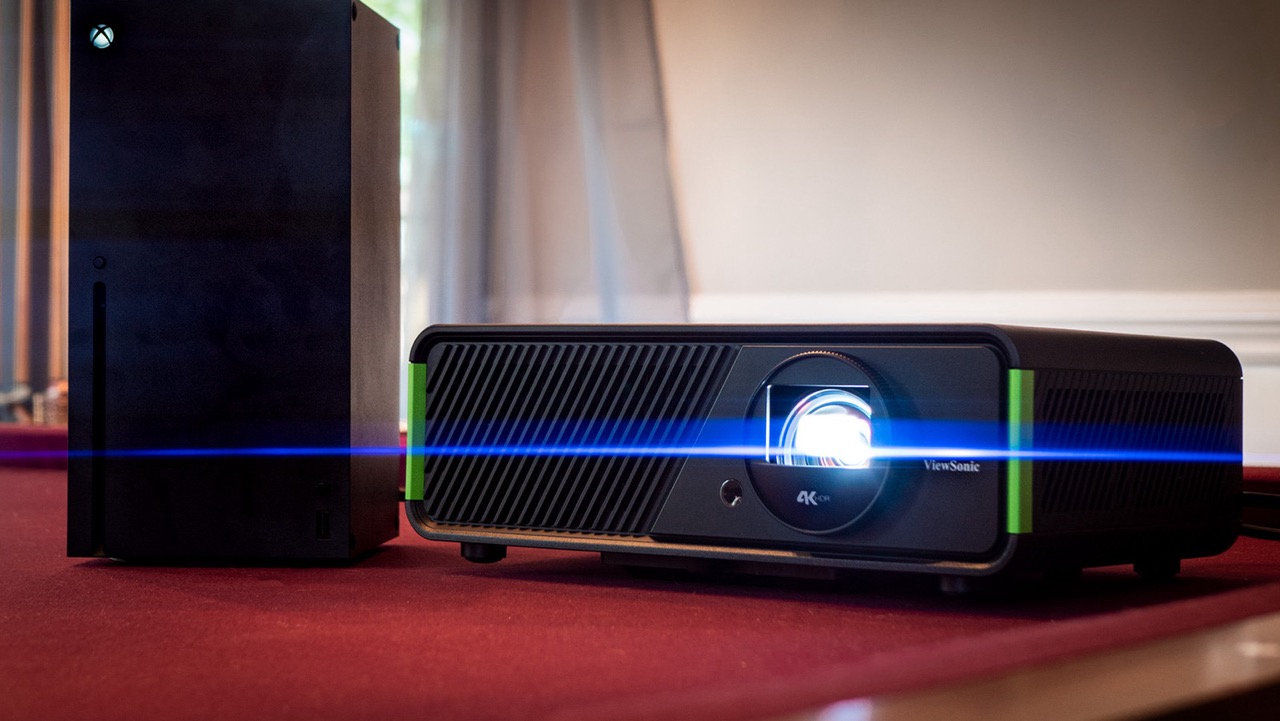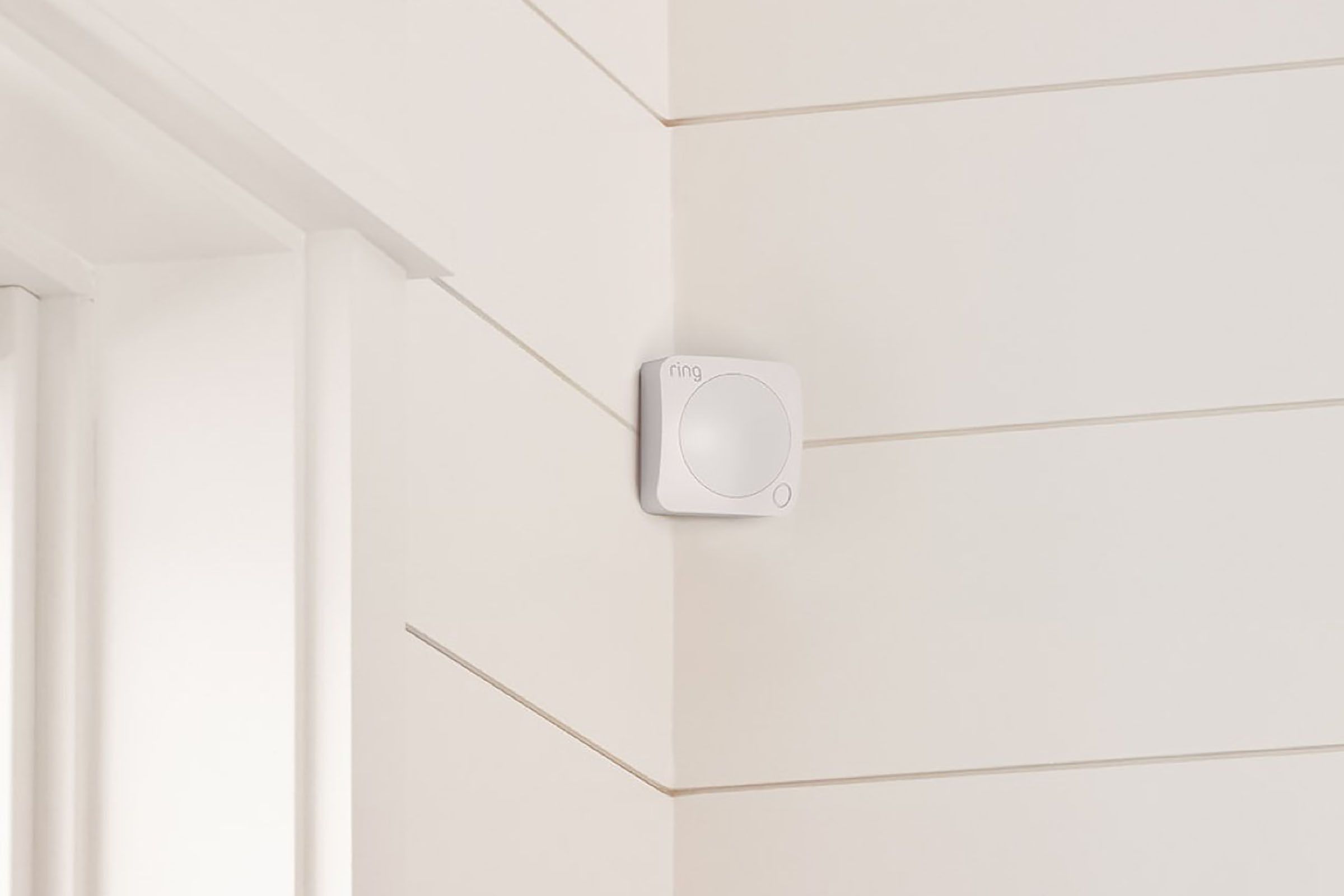Home>Home Security and Surveillance>Why Does My Ring Motion Detector Keep Going Off


Home Security and Surveillance
Why Does My Ring Motion Detector Keep Going Off
Modified: October 27, 2024
"Discover the reasons behind the constant activation of your ring motion detector and find effective solutions for home security and surveillance."
(Many of the links in this article redirect to a specific reviewed product. Your purchase of these products through affiliate links helps to generate commission for Storables.com, at no extra cost. Learn more)
Introduction
Home security is a paramount concern for homeowners, and investing in a reliable surveillance system is an effective way to protect your property and give you peace of mind. One popular option is the Ring Motion Detector, a device that detects motion and triggers alerts to notify you of any suspicious activity.
However, it can be frustrating when your Ring Motion Detector keeps going off for no apparent reason. False alarms not only disrupt your daily routine but can also lead to complacency and decreased responsiveness if you become desensitized to the alerts. To understand why your Ring Motion Detector is frequently triggering false alarms, it is essential to delve into its workings and potential causes.
In this article, we will explore the reasons behind false alarms and provide you with insights into troubleshooting and fixing the issue. By understanding the factors that can contribute to false alarms and implementing appropriate solutions, you can ensure that your Ring Motion Detector functions optimally and provides accurate and reliable notifications when they matter most.
Key Takeaways:
- Ring Motion Detectors can be triggered by environmental factors, pets, and nearby objects, leading to false alarms. Proper placement, sensitivity adjustments, and regular updates can help minimize these issues for reliable home security.
- To troubleshoot false alarms, consider adjusting sensitivity settings, evaluating placement, testing in different conditions, updating firmware, considering additional accessories, and seeking professional assistance when needed. Patience and persistence are key in achieving optimal performance.
Understanding Ring Motion Detectors
Before delving into the causes of false alarms, it is crucial to have a solid understanding of how Ring Motion Detectors operate. These devices are equipped with advanced sensors that can detect movement within their designated area of coverage. When motion is detected, the detector sends an alert to your smartphone or other connected devices, allowing you to monitor the situation in real-time.
Ring Motion Detectors utilize a combination of passive infrared (PIR) sensors and heat signature detection technology to accurately identify motion. The PIR sensors detect changes in infrared energy levels caused by moving objects, while the heat signature detection technology further refines the detection process by distinguishing between human heat signatures and those generated by other heat sources.
Ring Motion Detectors are typically designed to cover specific areas, such as entryways, hallways, or rooms. Depending on the model, they may feature adjustable sensitivity levels, allowing you to customize the sensitivity to fit your needs.
It’s important to note that while Ring Motion Detectors are highly effective in detecting motion, they are not foolproof. They rely on various factors, such as proper installation, environmental conditions, and appropriate sensor placement, to function optimally and minimize false alarms.
Now that we have a basic understanding of how Ring Motion Detectors work, let’s delve into the potential causes for false alarms and how to address them effectively.
Potential Causes for False Alarms
While Ring Motion Detectors are designed to minimize false alarms, there are several factors that can contribute to their occurrence. By identifying these potential causes, you can take the necessary steps to address them and reduce the frequency of false alerts.
1. Environmental Factors: Environmental conditions can play a significant role in triggering false alarms. Extreme temperatures, direct sunlight, strong winds, and heavy rain or snow can all affect the accuracy of the motion detection sensors. Additionally, reflective surfaces such as glass or shiny metal can create false motion detection due to the way they reflect infrared energy. It is important to consider the environment surrounding your Ring Motion Detector and take necessary precautions to minimize these potential interferences.
2. Sensor Placement: Improper sensor placement can also lead to false alarms. Incorrectly positioning the motion detector or pointing it towards heat sources, such as air vents or heaters, can cause frequent triggers. It is crucial to follow the manufacturer’s guidelines for sensor placement and ensure that it is oriented correctly to avoid unnecessary alarms.
3. Animal and Pet Interference: If you have pets or frequently encounter wildlife near your home, their movements can trigger false alarms. The motion sensors may detect the heat signatures and erratic movements of animals, leading to false alerts. To mitigate this issue, consider adjusting the detector’s sensitivity level or utilizing specific pet-friendly settings if available.
4. Interference from Nearby Objects: Objects placed too close to the motion detector can block or obstruct its sensors, resulting in inaccurate motion detection. Ensure that there are no obstacles or objects in the detection area that can interfere with the detector’s line of sight.
5. Power Supply Issues: Inadequate power supply or low battery levels can also contribute to false alarms. It is crucial to regularly check and replace batteries as needed and ensure a stable power source for your Ring Motion Detector.
By considering these potential causes for false alarms, you can proactively address and mitigate the chances of false alerts. In the next section, we will explore troubleshooting steps and solutions to help you fix and prevent false alarms with your Ring Motion Detector.
Environmental Factors
Environmental conditions can significantly impact the performance of your Ring Motion Detector and contribute to false alarms. It is essential to be aware of these factors and take appropriate measures to minimize their influence on your device.
Extreme Temperatures: Drastic temperature changes can affect the performance of motion detection sensors. High or low temperatures can cause the sensors to become less accurate, leading to false alarms. If your Ring Motion Detector is exposed to extreme temperatures, consider relocating it to a more controlled environment, such as indoors or under a protective cover.
Direct Sunlight: Direct sunlight can create shadows and rapid changes in temperature that may trigger false alarms. To prevent this, position the motion detector in an area where it is not directly exposed to sunlight or use a sunshade or cover to shield it from direct sunlight.
Strong Winds: Strong gusts of wind can cause objects like tree branches or plants to move within the detection area of the motion detector, leading to false alerts. Ensure that the sensor is not installed near objects that are highly susceptible to wind movement to minimize false alarms.
Heavy Rain or Snow: Rain or snow can create water droplets or flakes that may be detected as motion, especially when they are in close proximity to the motion detector. If possible, position the motion detector under a covered area or adjust its sensitivity level to mitigate false alarms caused by precipitation.
Reflective Surfaces: Reflective surfaces, such as glass windows or polished metal, can reflect infrared energy and confuse the motion detection sensors. This can result in false alarms when the sensor picks up the reflected energy. If your motion detector is positioned near a reflective surface, consider adjusting its sensitivity or adding curtains or blinds to minimize false alarms.
By understanding the environmental factors that can impact the performance of your Ring Motion Detector, you can take appropriate measures to reduce false alarms. In the next section, we will discuss the significance of sensor placement when it comes to minimizing false alerts.
Sensor Placement
The proper placement of your Ring Motion Detector is crucial for accurate motion detection and to minimize false alarms. Here are some key considerations for sensor placement:
1. Height and Angle: Mount the motion detector at a suitable height, typically between 6 to 8 feet above the ground. This height ensures optimal coverage while reducing false alarms caused by pets or wildlife near the ground. Additionally, aim the sensor at an angle that covers the desired area without detecting motion outside of it. Be mindful of any obstructions that could block the sensor’s line of sight.
2. Coverage Area: Evaluate the area you want the motion detector to monitor and adjust its coverage area accordingly. Most Ring Motion Detectors offer adjustable sensitivity or coverage zone settings, allowing you to customize the detection range. Adjust the settings to target specific entry points or areas of concern while avoiding unnecessary detection in adjacent areas.
3. Avoid Direct Heat Sources: Install the motion detector away from direct heat sources such as air vents, radiators, or heaters. Heat sources can cause fluctuations in temperature, leading to false motion readings by the sensors. Avoid positioning the detector near heat-emitting appliances or areas with high temperature variability.
4. Indoors vs. Outdoors: Consider the environment in which you are installing the motion detector. Outdoor placement requires additional weatherproofing measures and careful consideration of environmental factors previously discussed. Indoor placement may still require attention to potential reflective surfaces or objects that could obstruct the sensor’s view.
5. Test and Adjust: After installation, thoroughly test the motion detector’s effectiveness and adjust its settings as needed. Walk through the detection area to ensure that the sensor accurately detects your movement within the desired range without triggering false alarms. Make any necessary sensitivity or coverage adjustments to fine-tune its performance.
Proper sensor placement is crucial for maximizing the effectiveness of your Ring Motion Detector and minimizing false alarms. Take the time to carefully assess your home’s layout and specific needs to determine the best placement for the motion detector.
In the next section, we will explore the potential interference caused by animals and pets and how you can address this issue.
Animal and Pet Interference
One common cause of false alarms with Ring Motion Detectors is interference from animals and pets. The unpredictable movements and heat signatures of animals can trigger motion detection sensors, leading to false alerts. Here are some tips to minimize animal and pet interference:
1. Adjust Sensitivity Levels: Most modern motion detectors, including Ring’s, offer adjustable sensitivity levels. Lowering the sensitivity can help reduce false alarms caused by smaller animals or pets. Experiment with different sensitivity settings to find the right balance that detects human movement while minimizing false alerts.
2. Utilize Pet-Friendly Settings: Some Ring Motion Detectors come equipped with pet-friendly settings specifically designed to reduce false alarms caused by pets. These settings can ignore motion from small-sized animals while still detecting larger movements. Consult your device’s manual or the Ring app to see if these settings are available and how to enable them.
3. Careful Placement: Consider the placement of your motion detector in relation to the activities of your pets. Avoid placing the detector in areas where your pets roam frequently or in their favorite play zones. Additionally, position the sensor at a height that is less likely to detect your pets’ movements, such as above their normal range of activity.
4. Use Pet Barriers: If your pet consistently triggers false alarms in a specific area monitored by the motion detector, consider using pet barriers or gates to restrict their access to that area. This can help prevent unnecessary motion detection and subsequent false alerts.
5. Proper Training and Behavior Modification: If your pet continues to trigger false alarms despite sensitivity adjustments and careful placement, it may be beneficial to work on training and behavior modification techniques. Consult with a professional trainer to address any behavioral issues that may contribute to the false alarms.
By taking these measures into consideration, you can significantly reduce the occurrence of false alarms caused by animal and pet interference with your Ring Motion Detector.
In the next section, we will discuss the potential interference caused by nearby objects and how to address this issue effectively.
Make sure the motion detector is not facing direct sunlight or heat sources, as this can cause false alarms. Also, check for any moving objects or pets that could be triggering the sensor.
Interference from Nearby Objects
Another factor that can contribute to false alarms with Ring Motion Detectors is interference from nearby objects. Objects placed too close to the motion detector can obstruct its sensors, resulting in inaccurate motion detection. Here are some tips to minimize interference from nearby objects:
1. Obstacle-free Line of Sight: Ensure that there are no objects positioned directly in front of the motion detector that could obstruct its line of sight. This includes furniture, decorations, or any other items that may partially or completely block the sensor’s field of view.
2. Avoid Placing near Moving Objects: Keep the motion detector away from objects that can generate movements or vibrations, such as fans, curtains, hanging plants, or decorative wind chimes. These objects may cause false triggers as they move within the sensor’s detection area.
3. Minimize False Reflections: Reflective surfaces, such as mirrors or glossy walls, can inadvertently reflect infrared energy towards the motion detector, leading to false alarms. Place the detector away from such surfaces or adjust its position to minimize or eliminate any false reflections.
4. Test Different Locations: If you are experiencing frequent false alarms, try relocating the motion detector to a different area within its range. Experiment with different positions to find one that provides optimal coverage while minimizing interference from nearby objects.
5. Adjust Sensitivity Settings: If the interference is unavoidable due to the environment or object placement, consider adjusting the sensitivity settings of the motion detector. Lowering the sensitivity can help reduce false alarms caused by small movements or objects within the detection range.
By being mindful of nearby objects and their potential to interfere with the motion detector’s sensors, you can greatly reduce the chances of false alarms. Regularly inspect the area surrounding the motion detector and make any necessary adjustments to ensure an unobstructed and accurate detection process.
In the next section, we will explore power supply issues and how they can contribute to false alarms with Ring Motion Detectors.
Power Supply Issues
Power supply problems can also contribute to false alarms with Ring Motion Detectors. Insufficient power or low battery levels can compromise the device’s performance and accuracy. Here are some factors to consider when it comes to power supply:
1. Battery Life: If your Ring Motion Detector operates on batteries, it is essential to regularly check their status and replace them as needed. Low battery levels can result in inconsistent performance and false alarms. Consult the device manual or the Ring app to determine the recommended battery replacement schedule.
2. Battery Quality: Choose high-quality batteries that are compatible with your motion detector. Inferior quality batteries may not provide a consistent power supply, leading to erratic behavior and false alarms. Invest in reputable brands to ensure reliable performance.
3. Power Source: If your Ring Motion Detector is powered by an electrical outlet, ensure that it is securely connected and receiving a stable power supply. Check for any loose connections or damaged wiring that could impact the device’s operation.
4. Backup Power: Consider utilizing backup power sources, such as uninterruptible power supplies (UPS), to ensure continuous operation of your motion detector during power outages. This can help prevent false alarms that may occur due to sudden power interruptions or fluctuations.
5. Firmware Updates: Regularly check for firmware updates for your Ring Motion Detector. Updates may include optimizations and bug fixes that could address any known power-related issues and improve the overall performance of the device.
By paying attention to power supply issues and taking the necessary steps to ensure a stable and reliable power source, you can minimize false alarms and ensure consistent and accurate performance from your Ring Motion Detector.
In the next section, we will discuss the importance of software and firmware updates in troubleshooting and fixing false alarms.
Software and Firmware Updates
Regular software and firmware updates are essential for maintaining the optimal performance of your Ring Motion Detector and addressing any known issues or bugs that may contribute to false alarms. Here’s why software and firmware updates are important:
1. Bug Fixes: Updates often include bug fixes that address known issues, including false alarms. Manufacturers continuously work to improve the accuracy and reliability of their motion detectors, and updates are a way to deliver these enhancements to users.
2. Performance Enhancements: Software and firmware updates can also improve the overall performance of your Ring Motion Detector by optimizing its detection algorithms and algorithms that reduce false alarms. These updates may include advancements in motion sensing technology or fine-tuning to better differentiate between human movement and other sources of motion.
3. Compatibility: Updates ensure that your motion detector remains compatible with the latest versions of the Ring app or other related software. It is important to keep your devices updated to avoid any potential compatibility issues that could impact performance and lead to false alarms.
4. New Features: Updates may introduce new features or functionalities that can enhance the overall user experience. These features could include additional customization options, advanced notification settings, or improved integration with other smart home devices, all of which can contribute to better false alarm management.
5. Security Patches: Updates often include security patches that address vulnerabilities and protect your motion detector from potential threats. Keeping your device updated ensures that it is equipped with the latest security measures and safeguards against unauthorized access or tampering.
To ensure that your Ring Motion Detector is running the latest software and firmware, regularly check for updates through the Ring app or the manufacturer’s website. Follow the provided instructions to install any available updates and keep your device up to date.
In the next section, we will discuss troubleshooting steps and solutions to help you fix and prevent false alarms with your Ring Motion Detector.
Troubleshooting and Fixing False Alarms
Experiencing false alarms with your Ring Motion Detector can be frustrating, but there are several troubleshooting steps you can take to address the issue effectively. Here are some suggestions to help you troubleshoot and fix false alarms:
1. Adjust Sensitivity Settings: Start by adjusting the sensitivity settings of your motion detector. Lowering the sensitivity level can help minimize false alarms caused by small movements or objects within the detection range. Experiment with different sensitivity levels to find the right balance between accurate motion detection and false alarm prevention.
2. Evaluate Placement: Review the placement of your motion detector. Ensure that it is positioned correctly, away from heat sources, reflective surfaces, and objects that could block or obstruct the sensors. Consider relocating the detector if necessary to optimize its coverage area and minimize potential interferences.
3. Test in Different Conditions: Conduct thorough testing of the motion detector’s performance in various conditions, including during different times of day and weather conditions. This will help identify any specific triggers or patterns that may be causing false alarms. Make adjustments to the settings or placement accordingly.
4. Update Firmware and Software: Check for any available firmware or software updates for your Ring Motion Detector. Installing the latest updates can help address known issues, improve performance, and potentially resolve false alarm problems.
5. Consider Additional Accessories: Depending on your specific situation, you may find it helpful to consider additional accessories or devices to enhance the functionality of your Ring Motion Detector. For example, using motion deflectors or curtains can help reduce false alarms caused by specific movements or areas within the detection range.
6. Seek Professional Assistance: If troubleshooting steps do not resolve the false alarm issue, consider reaching out to Ring customer support or consulting with a professional installer or technician. They can provide further guidance, diagnose any potential hardware or software issues, and offer additional solutions to address the problem.
Remember that patience and persistence are key when troubleshooting false alarms. It may take some time and adjustments to find the optimal settings and position that work best for your specific environment. By implementing these troubleshooting steps, you can effectively reduce false alarms and optimize the performance of your Ring Motion Detector.
Final Thoughts
Investing in a reliable home security system, such as a Ring Motion Detector, is an excellent step towards safeguarding your property. However, false alarms can disrupt your daily routine and lead to complacency if not properly addressed. By understanding the potential causes of false alarms and implementing the appropriate solutions, you can ensure that your Ring Motion Detector functions accurately and provides reliable notifications when needed.
Remember to account for environmental factors, optimize sensor placement, minimize interference from nearby objects, address potential animal and pet interference, ensure a stable power supply, and keep your device’s software and firmware up to date. By following these strategies and troubleshooting steps, you can enjoy the effective and reliable performance of your Ring Motion Detector, bringing you the peace of mind you deserve.
Conclusion
False alarms from your Ring Motion Detector can be a frustrating experience, but with a deeper understanding of the causes and effective troubleshooting methods, you can reduce their occurrence and enhance the reliability of your home security system.
Throughout this article, we explored various factors that can contribute to false alarms, including environmental conditions, sensor placement, animal and pet interference, interference from nearby objects, power supply issues, and the importance of software and firmware updates.
By considering these factors and implementing the suggested solutions, such as adjusting sensitivity settings, evaluating placement, testing in different conditions, updating firmware and software, considering additional accessories, and seeking professional assistance when needed, you can troubleshoot false alarms effectively.
It is important to remember that finding the right balance between accurate motion detection and minimizing false alarms may require some time and adjustment. Patience and persistence are key in achieving optimal performance from your Ring Motion Detector.
Ultimately, by ensuring the proper functioning of your motion detector, you can enjoy the peace of mind and security that comes from knowing your home is protected. With accurate and reliable motion detection, you will be promptly alerted to any suspicious activity, allowing you to take appropriate action.
Remember to regularly assess your environment, follow manufacturer guidelines for sensor placement, and keep your motion detector updated with the latest software and firmware. By doing so, you will maintain the effectiveness of your Ring Motion Detector and mitigate the chances of false alarms.
Investing in home security and surveillance systems is a proactive step towards securing and protecting your property. By addressing false alarms and optimizing the performance of your Ring Motion Detector, you can ensure that your home is well-guarded, providing you and your loved ones with the peace of mind you deserve.
After troubleshooting your Ring motion detector, consider boosting overall home safety. Our next guide covers essential strategies and benefits of securing your living space. Dive into our detailed discussion on why robust home security systems are indispensable for every household. Learn how to safeguard your family and property effectively.
Frequently Asked Questions about Why Does My Ring Motion Detector Keep Going Off
Was this page helpful?
At Storables.com, we guarantee accurate and reliable information. Our content, validated by Expert Board Contributors, is crafted following stringent Editorial Policies. We're committed to providing you with well-researched, expert-backed insights for all your informational needs.

